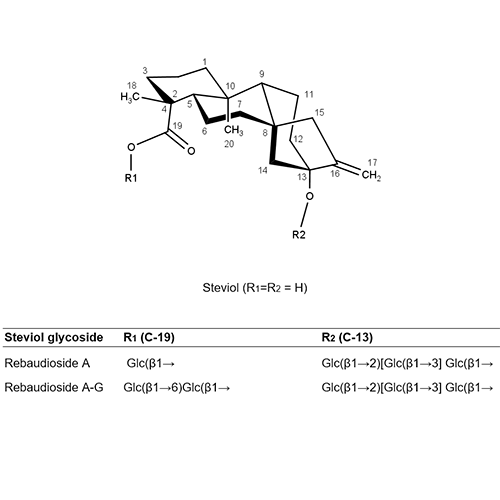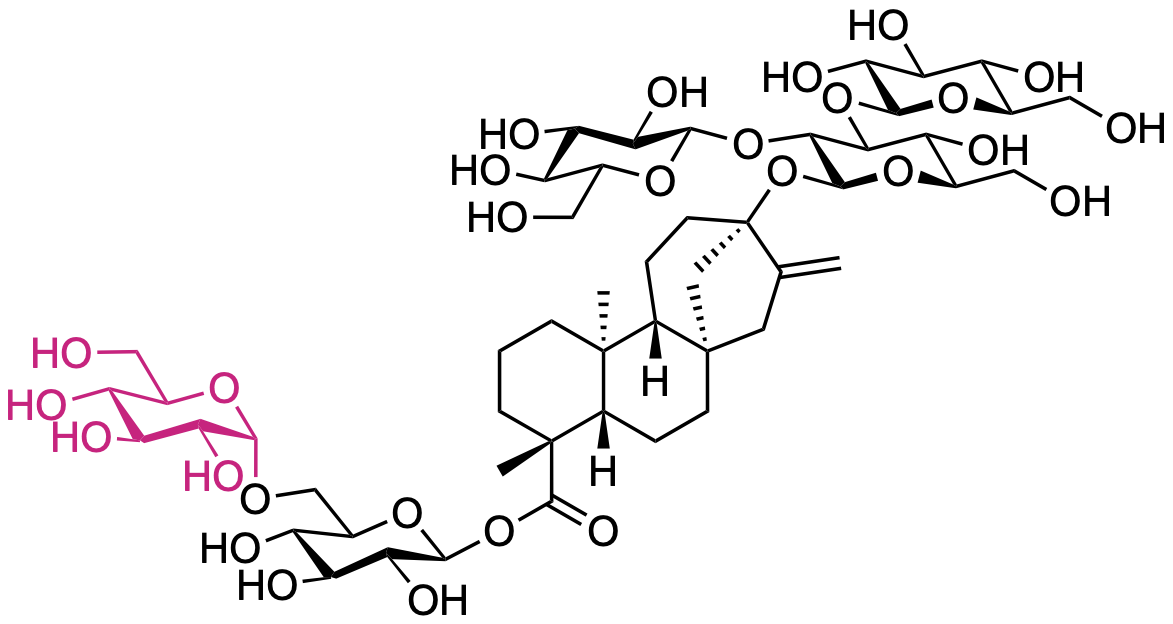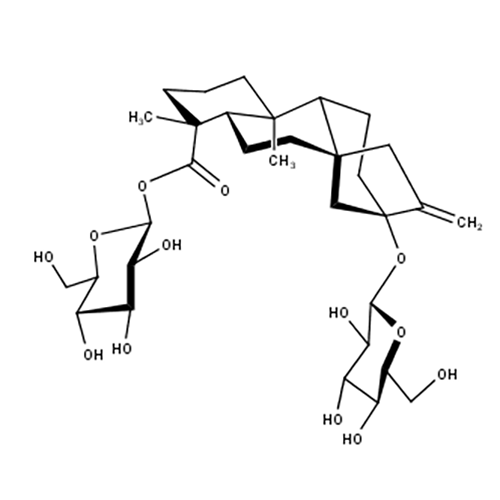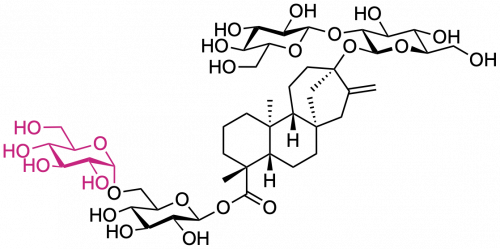Stevia rebaudiana (Stevia) is a plant native to South America, the leaves contain sweet components known as steviol glycosides. These compounds are allowed as food additives in the USA since 2009, and the European market since December 2011. Steviol glycosides are excellent natural alternatives for sucrose and synthetic sweeteners. The main disadvantage of commercial use of steviol glycosides is their bitter lingering aftertaste. The quality and sweetness of the steviol glycosides can be improved via transglycosylation of the C-13 terthydroxyl and the C-19 carboxylic acid functions of the steviol backbone.
The Gtf180-ΔN-Q1140E mutant of the generally recognized as safe (GRAS) enzyme Lactobacillus reuteri is used to glucosylate the steviol glycoside RebaudiosideA (RebA), whereby sucrose is used as a donor substrate. The enzyme glycosylates exclusively the Glc(β1→C-19 residue of the RebA, with the initial formation of an α(1→6) linkage. The core structure is extended with an extra glucose forming RebA-G1 (70 percent) and is multi glucosylated forming RebA-G≥2 (30 percent). The glycosylated RebA product shows a significant reduction in bitterness, resulting in a superior taste profile compared to RebA.

Structure of the aglycone steviol, and the Rebaudioside A residues, occurring in the leaves of Stevia rebaudiana. Glucose (Glc) exists in the pyranose ring form in D configuration.





